COVID-19
Top Fauci Aide Allegedly Learned To Make ‘Smoking Gun’ Emails ‘Disappear,’ Testimony Reveals
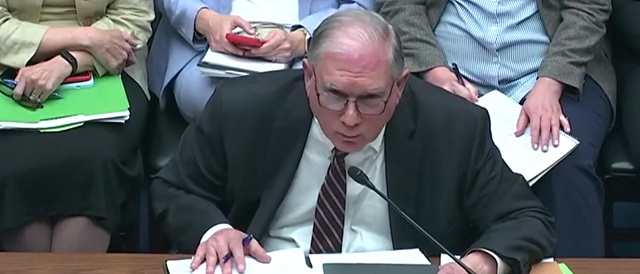
 From the Daily Caller News Foundation
From the Daily Caller News Foundation
By JASON COHEN
“Dr. David Morens, a senior advisor to Fauci for decades, wrote in an email to Dr. Daszak, ‘I learned from our FOIA lady here how to make emails disappear after I am FOIA’d, but before the search starts. So I think we are all safe.
National Institutes of Health (NIH) Principal Deputy Director Lawrence Tabak testified on Thursday that a former aide to Dr. Anthony Fauci allegedly violated the agency’s public records policy by disposing of certain emails.
Fauci’s senior advisor at the NIH Dr. David Morens allegedly intentionally obstructed the House Select Subcommittee on the Coronavirus Pandemic’s investigations into the origins of COVID-19 to protect his boss. Tabak told Republican House Oversight Chair James Comer in response to his questioning during a hearing that Morens allegedly violated NIH policy by getting rid of emails following public records requests.
WATCH:
“Dr. David Morens, a senior advisor to Fauci for decades, wrote in an email to Dr. Daszak, ‘I learned from our FOIA lady here how to make emails disappear after I am FOIA’d, but before the search starts. So I think we are all safe. Plus I deleted most of those earlier emails after sending them to Gmail.’ Is that consistent with NIH document retention policies?” Comer asked, to which Tabak answered that it’s not.
EcoHealth Alliance President Peter Daszak allegedly misled the federal government to receive grants that funded virus research at the Wuhan Institute of Virology, where some suspect the COVID-19 pandemic originated.
“Does the NIH FOIA office teach employees how to avoid transparency?” Comer followed up.
“I certainly hope not,” Tabak said.
Daszak appeared for a transcribed interview in November 2023, where he called Morens a “mentor.”
“He also later wrote Dr. Daszak, ‘We are all smart enough to know to never have smoking guns and if we did, we wouldn’t put them in emails. And if we found them, ‘we would delete them,” Comer said, again asking if this is consistent with agency policy and Tabak again saying it’s not.
“Finally, emails show that Dr. Morens would share internal questions about upcoming FOIA releases with Dr. Daszak. He would then help Dr. Daszak craft responses to documents being released in these FOIAs. Are those actions consistent with NIH policies?” Comer asked.
Tabak expressed uncertainty about whether these actions took place, but said they would not be consistent with agency policy.
Morens in 2021 sent an email to Daszak, explaining that he tries “to always communicate on gmail because [his] NIH email is FOIA’d constantly,” The Intercept reported.
U.S. Right to Know is one organization that submitted public records requests to the NIH for emails Morens sent regarding content related to the origins of the COVID-19 pandemic. It is currently engaged in litigation with the agency for its lack of compliance with a January 2022 request.
The Department of Health and Human Services (HHS) on Wednesday informed EcoHealth Alliance that the federal government would be suspending current grants to the nonprofit and it is striving to block it from getting more grants. HHS cites a series of mistakes EcoHealth Alliance made, including issues with the organization’s monitoring of work at the Wuhan Institute of Virology.
COVID-19
New report warns Ottawa’s ‘nudge’ unit erodes democracy and public trust
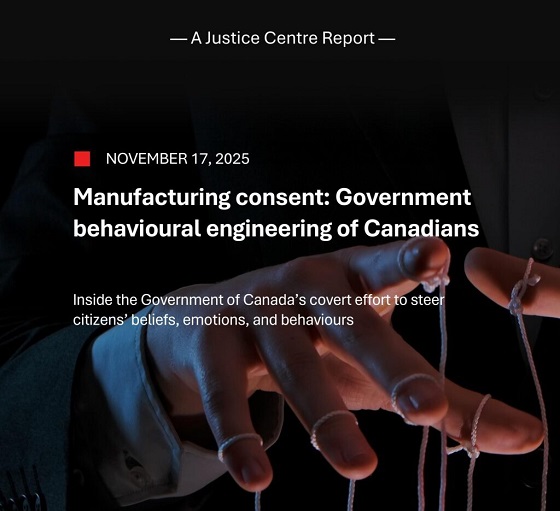
The Justice Centre for Constitutional Freedoms has released a new report titled Manufacturing consent: Government behavioural engineering of Canadians, authored by veteran journalist and researcher Nigel Hannaford. The report warns that the federal government has embedded behavioural science tactics in its operations in order to shape Canadians’ beliefs, emotions, and behaviours—without transparency, debate, or consent.
The report details how the Impact and Innovation Unit (IIU) in Ottawa is increasingly using sophisticated behavioural psychology, such as “nudge theory,” and other message-testing tools to influence the behaviour of Canadians.
Modelled after the United Kingdom’s Behavioural Insights Team, the IIU was originally presented as an innocuous “innovation hub.” In practice, the report argues, it has become a mechanism for engineering public opinion to support government priorities.
With the arrival of Covid, the report explains, the IIU’s role expanded dramatically. Internal government documents reveal how the IIU worked alongside the Public Health Agency of Canada to test and design a national communications strategy aimed at increasing compliance with federal vaccination and other public health directives.
Among these strategies, the government tested fictitious news reports on thousands of Canadians to see how different emotional triggers would help reduce public anxiety about emerging reports of adverse events following immunization. These tactics were designed to help achieve at least 70 percent vaccination uptake, the target officials associated with reaching “herd immunity.”
IIU techniques included emotional framing—using fear, reassurance, or urgency to influence compliance with policies such as lockdowns, mask mandates, and vaccine requirements. The government also used message manipulation by emphasizing or omitting details to shape how Canadians interpreted adverse events after taking the Covid vaccine to make them appear less serious.
The report further explains that the government adopted its core vaccine message—“safe and effective”—before conclusive clinical or real-world data even existed. The government then continued promoting that message despite early reports of adverse reactions to the injections.
Government reliance on behavioural science tactics—tools designed to steer people’s emotions and decisions without open discussion—ultimately substituted genuine public debate with subtle behavioural conditioning, making these practices undemocratic. Instead of understanding the science first, the government focused primarily on persuading Canadians to accept its narrative. In response to these findings, the Justice Centre is calling for immediate safeguards to protect Canadians from covert psychological manipulation by their own government.
The report urges:
- Parliamentary oversight of all behavioural science uses within federal departments, ensuring elected representatives retain oversight of national policy.
- Public disclosure of all behavioural research conducted with taxpayer funds, creating transparency of government influence on Canadians’ beliefs and decisions.
- Independent ethical review of any behavioural interventions affecting public opinion or individual autonomy, ensuring accountability and informed consent.
Report author Mr. Hannaford said, “No democratic government should run psychological operations on its own citizens without oversight. If behavioural science is being used to influence public attitudes, then elected representatives—not unelected strategists—must set the boundaries.”
COVID-19
Major new studies link COVID shots to kidney disease, respiratory problems
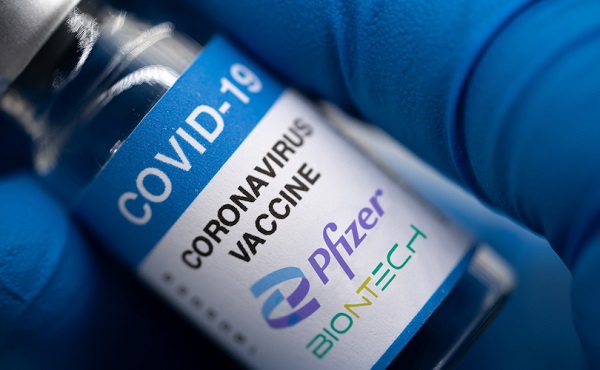
From LifeSiteNews
Receiving four or more COVID shots was associated with 559% higher likelihood of cold in children, a new study found, and another one linked the shots to higher risk of renal dysfunction.
Two major new studies have been published sounding the alarm about the COVID-19 shots potentially carrying risks of not only respiratory diseases but even kidney injury.
The Washington Stand first drew attention to the studies, published in the International Journal of Infectious Diseases (IJID) and International Journal of Medical Science (IJMS), respectively.
The first examined insurance claims and vaccination records for the entire population of South Korea, filtering out cases of infection prior to the start of the outbreak for a pool of more than 39 million people. It reported that the COVID shots correlated with mixed impacts on other respiratory conditions. A “temporary decline followed by a resurgence of URI [upper respiratory infections] and common cold was observed during and after the COVID-19 pandemic,” it concluded. “In the Post-pandemic period (January 2023–September 2024), the risk of URI and common cold increased with higher COVID-19 vaccine doses,” it noted.
Children in particular, who are known to face the lowest risk from COVID itself, had dramatically higher odds of adverse events the more shots they took. Receiving four or more was associated with 559% higher likelihood of cold, 91% higher likelihood of pneumonia, 83% higher likelihood of URI, and 35% higher likelihood of tuberculosis.
The second study examined records of 2.9 million American adults, half of whom received at least one COVID shot and half of whom did not.
“COVID-19 vaccination was associated with a higher risk of subsequent renal dysfunction, including AKI [acute kidney injury] and dialysis treatment,” it found, citing 15,809 cases versus 11,081. “The cumulative incidence of renal dysfunction was significantly higher in vaccinated than in unvaccinated patients […] At the one-year follow-up, the number of deaths among vaccinated individuals was 7,693, while the number of deaths among unvaccinated individuals was 7,364.” Notably, the study did not find a difference in the “type of COVID-19 vaccine administered.”
The researchers note that this is not simply a matter of correlation, but that a causal mechanism for such results has already been indicated.
“Prior studies have indicated that COVID-19 vaccines can damage several tissues,” they explain.
“The main pathophysiological mechanism of COVID-19 vaccine-related complications involve vascular disruption. COVID-19 vaccination can induce inflammation through interleukins and the nod-like receptor family pyrin domain-containing 3, an inflammatory biomarker. In another study, thrombosis episodes were observed in patients who received different COVID-19 vaccines. Additionally, mRNA COVID-19 vaccines have been associated with the development of myocarditis and related complications […] The development of renal dysfunction can be affected by several biochemical factors [26]. In turn, AKI can increase systemic inflammation and impair the vasculature and red blood cell aggregation. Given that the mechanism underlying COVID-19 vaccine-related complications corresponds to the pathophysiology of kidney disease, we hypothesized that COVID-19 vaccination may cause renal dysfunction, which was supported by the results of this study.”
Launched in the final year of President Donald Trump’s first term in response to COVID-19, Operation Warp Speed (OWS) had the COVID shots ready for use in a fraction of the time any previous vaccine had ever been developed and tested. As LifeSiteNews has extensively covered, a body of evidence steadily accumulated over the following years that they failed to prevent transmission and, more importantly, carried severe risks of their own. COVID was a sticking point for many in Trump’s base, yet he doggedly refused to disavow OWS.
Since leaving office, Trump repeatedly promoted the shots as “one of the greatest achievements of mankind.” The negative reception to such comments got him to drop the subject for a while, but in July 2022, he complained that “we did so much in terms of therapeutics and a word that I’m not allowed to mention. But I’m still proud of that word, because we did that in nine months, and it was supposed to take five years to 12 years. Nobody else could have done it. But I’m not mentioning it in front of my people.”
So far, Trump’s second administration has rolled back several recommendations for the shots but not yet pulled them from the market, despite hiring several vocal critics of the COVID establishment and putting the Department of Health & Human Services under the leadership of America’s most prominent anti-vaccine activist, Robert F. Kennedy Jr. Most recently, the administration has settled on leaving the current vaccines optional but not supporting work to develop successors.
In early August, Kennedy announced the government would be “winding down” almost $500 million worth of mRNA vaccine projects and rejecting future exploration of the technology in favor of more conventional vaccines. Last week, HHS revoked emergency use authorizations (EUA) for the COVID shots, which were used to justify the long-since-rescinded mandates and sidestep other procedural hurdles, and in its place issued “marketing authorization” for those who meet a minimum risk threshold for the following mRNA vaccines: Moderna (6+ months), Pfizer (5+), and Novavax (12+).
“These vaccines are available for all patients who choose them after consulting with their doctors,” Kennedy said, making good on his pledge to “end COVID vaccine mandates, keep vaccines available to people who want them, especially the vulnerable, demand placebo-controlled trials from companies,” and “end the emergency.”
-
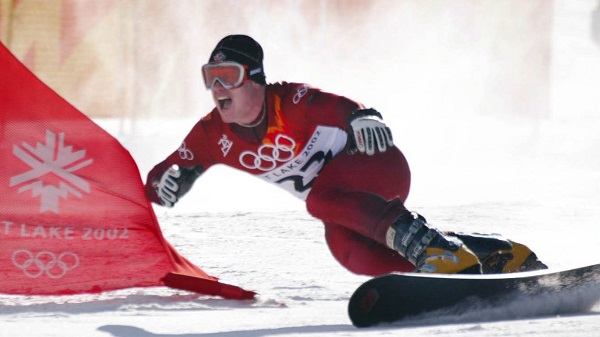
 Crime14 hours ago
Crime14 hours ago‘Modern-Day Escobar’: U.S. Says Former Canadian Olympian Ran Cocaine Pipeline with Cartel Protection and a Corrupt Toronto Lawyer
-

 Health2 days ago
Health2 days agoNEW STUDY: Infant Vaccine “Intensity” Strongly Predicts Autism Rates Worldwide
-

 Carbon Tax2 days ago
Carbon Tax2 days agoCarney fails to undo Trudeau’s devastating energy policies
-
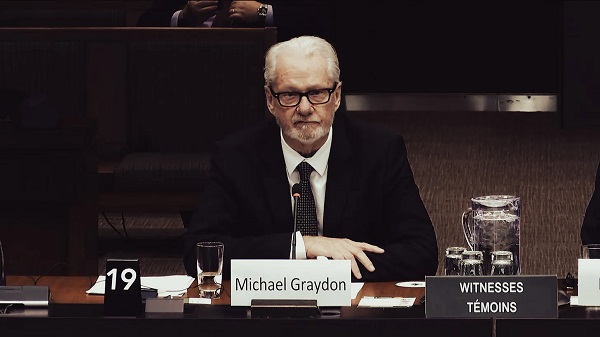
 Business1 day ago
Business1 day agoNearly One-Quarter of Consumer-Goods Firms Preparing to Exit Canada, Industry CEO Warns Parliament
-

 Daily Caller1 day ago
Daily Caller1 day agoDemocrats Explicitly Tell Spy Agencies, Military To Disobey Trump
-

 Addictions2 days ago
Addictions2 days agoActivists Claim Dealers Can Fix Canada’s Drug Problem
-
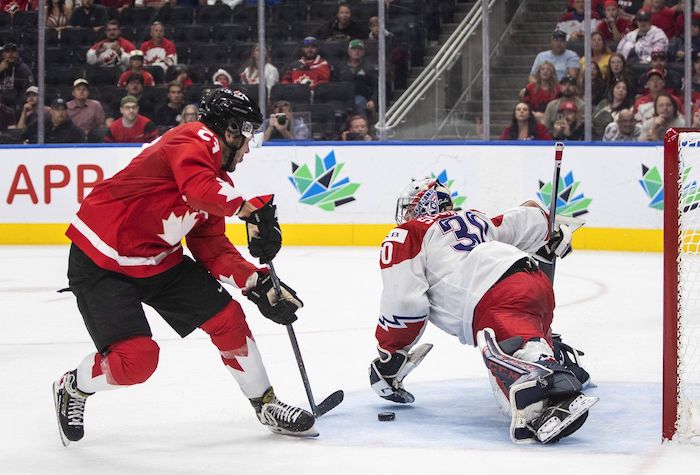
 Alberta2 days ago
Alberta2 days agoEdmonton and Red Deer to Host 2027 IIHF World Junior Hockey Championship
-
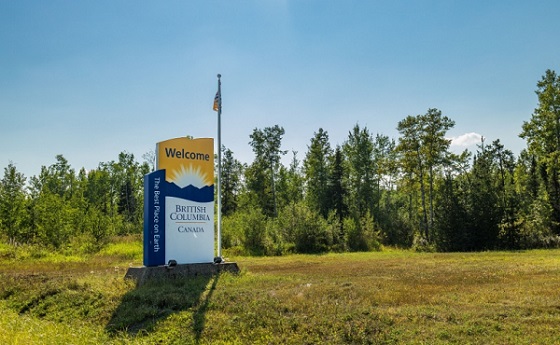
 Indigenous1 day ago
Indigenous1 day agoTop constitutional lawyer slams Indigenous land ruling as threat to Canadian property rights



